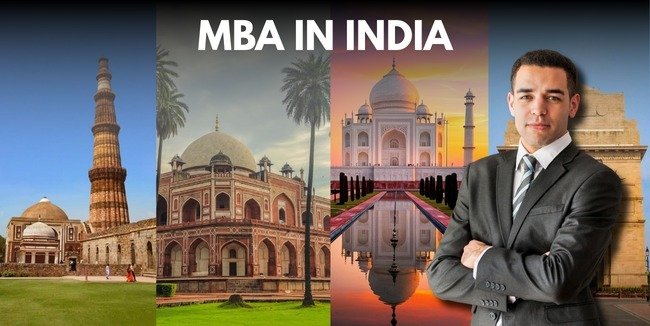
India is one of the fastest-growing economies in the world, and with this growth comes the demand for professional managers and business leaders. MBA in India (Master of Business Administration) has become one of the most sought-after postgraduate programs in India, offering students an opportunity to build careers in corporate leadership, consulting, finance, marketing, IT, and entrepreneurship.
Unlike other degrees, MBA is not just an academic qualification; it is a career accelerator that helps in networking, skill development, and achieving leadership positions. Every year, more than 2 lakh aspirants appear for exams like CAT, XAT, NMAT, CMAT, MAT, and SNAP to secure admission in IIMs and top B-schools.
Why Choose MBA in India?
- Affordable compared to MBA abroad
- Globally recognized programs (IIMs, ISB, XLRI)
- Wide range of specializations
- Excellent ROI from top public B-schools like FMS, JBIMS
- High-paying placements and corporate exposure
- Opportunity to work with global recruiters
History & Growth of MBA in India
The MBA journey in India started with the establishment of IIM Calcutta in 1961 in collaboration with MIT Sloan. Over the decades, MBA has evolved as a professional degree that bridges academic learning with corporate application.Today, India has more than 6,000 B-schools producing lakhs of graduates every year. However, only top-tier institutes like IIMs, ISB, XLRI, SPJIMR, and FMS consistently offer excellent placements and global recognition.
Eligibility Criteria for MBA in India
- Bachelor’s degree with at least 50% marks (45% for SC/ST students)
- Final-year students can apply
- A valid MBA entrance exam scorecard (CAT/XAT/CMAT etc.)
- For Executive MBA: Work experience of 2–5 years
MBA Admission Process in India
- Entrance Exam (CAT, XAT, CMAT, NMAT, SNAP, MAT, etc.)
- Shortlisting (based on scores, academics, and work experience)
- GD/WAT/PI – Group Discussion, Written Ability Test & Personal Interview
- Final Admission Offer – Based on composite score
MBA Entrance Exams in India (2025)
| Exam | Conducting Body | Mode | Top Institutes |
| CAT | IIMs | Online | All IIMs, FMS, MDI, SPJIMR |
| XAT | XLRI Jamshedpur | Online | XLRI, XIMB, LIBA |
| NMAT | GMAC | Online | NMIMS, ISB (Certificate) |
| SNAP | Symbiosis International | Online | SIBM Pune, SCMHRD |
| CMAT | NTA | Online | JBIMS, Great Lakes |
| MAT | AIMA | Online/Offline | Tier-2 B-schools |
| IIFT | NTA | Online | IIFT Delhi, Kolkata |
| TISSNET | TISS Mumbai | Online | TISS (HRM & Social Sciences) |
Types of MBA Programs in India
- Full-Time MBA (2 years) – Most popular choice
- One-Year MBA – For experienced professionals (ISB, IIM Ahmedabad PGPX)
- Executive MBA – For working professionals with 5–10 years of experience
- Online MBA – UGC-approved programs from Amity, NMIMS, etc.
- Distance MBA – IGNOU, Symbiosis SCDL
- Global MBA – Joint programs with foreign universities
Top 10 B-Schools in India (2025)
- IIM Ahmedabad
- IIM Bangalore
- IIM Calcutta
- XLRI Jamshedpur
- IIM Lucknow
- SPJIMR Mumbai
- FMS Delhi University
- ISB Hyderabad/Mohali
- IIM Kozhikode
- MDI Gurgaon
Popular MBA Specializations in India
- Finance
- Marketing
- Human Resource Management (HRM)
- Business Analytics
- International Business
- Supply Chain & Logistics
- Information Technology (IT)
- Healthcare Management
- Digital Marketing
- Entrepreneurship
MBA vs PGDM in India
| Feature | MBA | PGDM |
| Degree | Awarded by universities | Diploma by autonomous institutes |
| Curriculum | Theoretical | Industry-oriented |
| Examples | Delhi University, Mumbai University | IIMs, XLRI, SPJIMR |
MBA Placements & Salary Packages (2025)
Institute | Average Package | Highest Package |
| IIM Ahmedabad | ₹35 LPA | ₹1.15 Cr (International) |
| IIM Bangalore | ₹34 LPA | ₹1.20 Cr |
| IIM Calcutta | ₹37 LPA | ₹1.10 Cr |
| XLRI Jamshedpur | ₹28 LPA | ₹75 LPA |
| FMS Delhi | ₹32 LPA | ₹1.23 Cr |
| ISB Hyderabad | ₹34 LPA | ₹1.02 Cr |
| SPJIMR Mumbai | ₹27 LPA | ₹77 LPA |
Career Opportunities after MBA in India
- Consulting – McKinsey, BCG, Bain
- Investment Banking – Goldman Sachs, JP Morgan
- FMCG – HUL, Nestlé, P&G
- Technology – Google, Amazon, Microsoft, Infosys
- Startups – Flipkart, Zomato, Paytm
- Entrepreneurship – Many MBA graduates launch startups
Challenges of MBA in India
- Too many low-quality B-schools with poor ROI
- High competition for IIMs
- Rising cost of education
- Skill gap between Tier-1 and Tier-3 colleges
Future of MBA in India (2025 & Beyond)
- Growing demand for Business Analytics, AI, FinTech
- Shift towards online and hybrid MBAs
- Increasing focus on sustainability and green business
- Stronger collaboration with international universities
MBA in India vs MBA Abroad
| Factor | MBA in India | MBA Abroad |
| Duration | 2 years | 1–2 years |
| Cost | ₹2–25 lakhs | ₹30–80 lakhs |
| Exams | CAT, XAT | GMAT, GRE, IELTS |
| Placement | India-focused | Global opportunities |
| ROI | Very high in public colleges | Depends on the country. |
FAQs – MBA in India
Q1. Is MBA worth it in India?
Yes, MBA from IIMs, FMS, XLRI, and ISB ensures career growth and high ROI.
Q2. Can I do MBA without CAT?
Yes, through exams like XAT, NMAT, SNAP, CMAT, or direct admission in private colleges.
Q3. Which MBA specialization is best in 2025?
Finance, Business Analytics, Digital Marketing, and HRM are trending.
Q4. What is the cost of MBA in India?
₹2 lakhs to ₹25 lakhs depending on the college.
Q5. Which is the cheapest MBA college in India?
FMS Delhi and JBIMS Mumbai.
Q6. Which MBA exam is toughest?
CAT is considered the toughest, followed by XAT.
Q7. Which MBA gives the highest salary?
Finance, Consulting, and Business Analytics specializations.
Q8. How many IIMs are there in India?
21 IIMs across the country.
Q9. Is Online MBA valid in India?
Yes, UGC-approved Online MBAs are valid.

